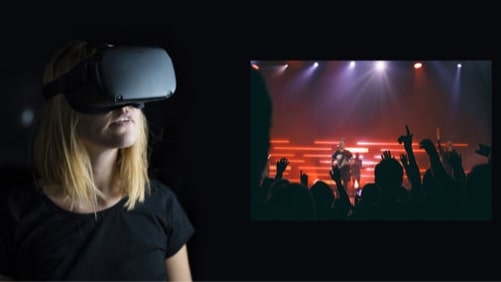Can augmented reality (AR) energize sports games played without fans?

One of the biggest attractions of sports is its energy. Following bans on mass events across countries and sports verticals, organizers have been looking for ways to bring back the fun by emulating fan-packed stadiums with CGI crowds, background noise, and other AR measures. (CGI = computer-generated imagery; AR = augmented reality.)
These tactics evoked mixed feelings in fans and journalists. Some called the special effects “stupid” and “desperation-amplifying,” while others claimed that they were a “great success.” Let’s see which tactics we are talking about.
Cardboard cutouts
Korea’s KBO was one of the first sports leagues to use cardboard cutouts to recreate fan presence at a stadium. Some fans said that having their cardboard replica in the stand made them feel as if they were actually there.
Another interesting implementation comes from the Oakland A’s, a U.S. baseball team from Oakland, Ca. Last month, the MLB league put up a web page where Oakland A’s fans can purchase a seat at the stadium for their cardboard cutout to be at during the entire season. When the season ends, fans will be able to retrieve their cutouts as souvenirs. The standard ticket costs $89, with discounts available to A’s Access members and Foul Ball Zone tickets costing extra.

Zoom conferences
AGF, a Danish soccer club, recently used Zoom to stream a match against Germany in real time. There were large screens put up at the stadium, showing either multitudes of fan miniatures or full-blown versions of them intermittently. AGF also mixed some pre-recorded crowd sounds from earlier games with the noise and the chants from Zoom. The result? While a few fans got kicked out for “showing the parts of the body they were not supposed to show,” organizers considered the game an overall positive experience. According to AGF’s Head of Media Soren Carlsen, many clubs in Europe now want to replicate their Zoom broadcast.

CGI (computer-generated imagery) fans
When soccer club Juventus recently met Napoli in the Coppa Italia finals, many fans seemed irked by the fake CGI crowd the organizers generated for the occasion. The news headlines that popped up after the match read things like, “Nobody is pleased with the virtual crowd in the Coppa Italia final” and “Soccer fans ruthlessly roasted the fake crowd used during the broadcast of the Coppa Italia final.”

Added sound effects
Several sports leagues tried incorporating artificial crowd noise to their games, with relative success. At the same time, there are some interesting initiatives that could be game-changers.
Autograph is a London-based theatrical sound design company. Prior to the pandemic, they used to create sound for London’s West End productions, but then work stopped due to the quarantine. This gave Autograph folks an idea to try their hand at creating the sound for sporting events. Helping them are production agency Entourage and chants provider FanChants. Autograph taps into FanChants’ extensive library of 26,000+ real chants and its own archives to re-create an authentic game atmosphere.
Unlike the similar systems being used by the Premier League broadcasters, our system is actually played out into the stadium using a high spec 12.1 concert grade surround sound system. This allows the players to get the full psychological benefit of having the crowd behind them even though the fans can’t be there.
The flexibility of the system also allows us to locate the audio to specific stands within the stadium and position the chants so they sound like they are coming from the home end.
Remote cheering
There is a tech company that decided to take it a step further. Japan’s Yamaha, a reputable musical instruments maker, is now testing an app that allows fans to cheer, clap, whistle, boo, and do other things by pressing buttons on their smartphone. Fan reactions are then streamed to the venue where the sporting event is taking place in real time. The project is carried out in partnership with SoundUD.
Robot cheering
Japan is known for its love of robots. Hence, it came as no surprise that the country’s NPB league decided to use a group of humanoid “Pepper” bots, along with dog-like “Spot” robots, to create an army of cheerleaders for a recent SoftBank Hawks baseball game. Wearing the team’s uniforms, the robots put on a synchronous dance to what sounded like a bright sports march.
Some Internet viewers called the dance “creepy,” “weird,” and “scary” in the comments, but in my humble opinion, if you put aside the unfamiliarity of the spectacle, it did add to the fun and dynamics of the show.
In conclusion
In the sports industry, there are various predictions floating around in terms of how the situation with in-venue events might unfold moving forward. Some say that the leagues need to charge broadcasting companies more money, because TV/the Internet are now the primary channel for sports entertainment consumption. Others say that sports like golf and car racing might attract new followers, since they don’t rely so much on the crowd effect for excitement.
There is also a possibility that in-venue attendance may not be the same after the pandemic as it was prior to it, because people will have formed new viewing habits. There are also those who are noticing the growing popularity of fantasy sports and other alternatives to traditional matches. I personally believe that, just six month into the pandemic, it is still early to make any far-reaching predictions. As always, we’ll live and see.
Related Blogs

VR could replace live entertainment - but are we there yet?
LEARN MORE